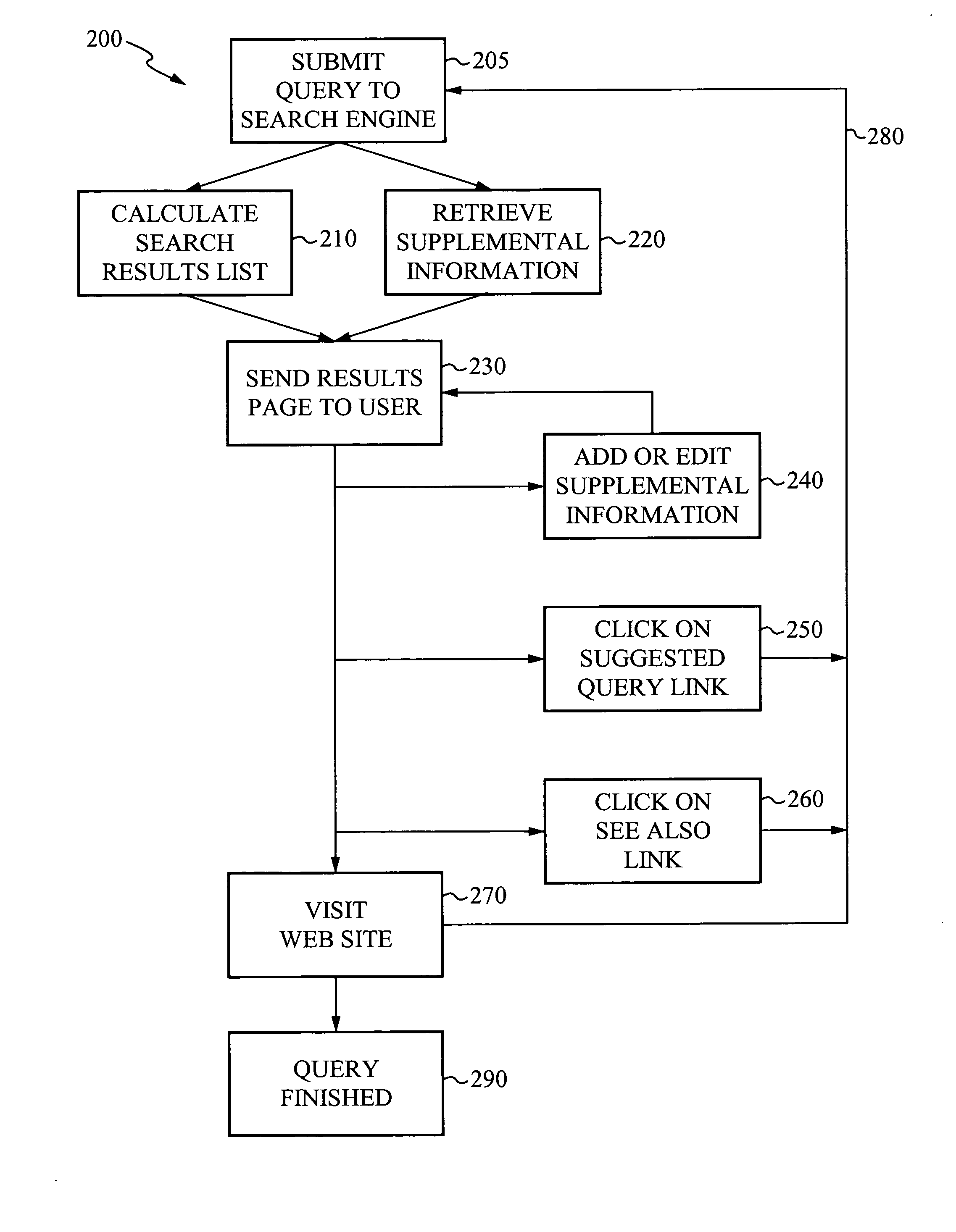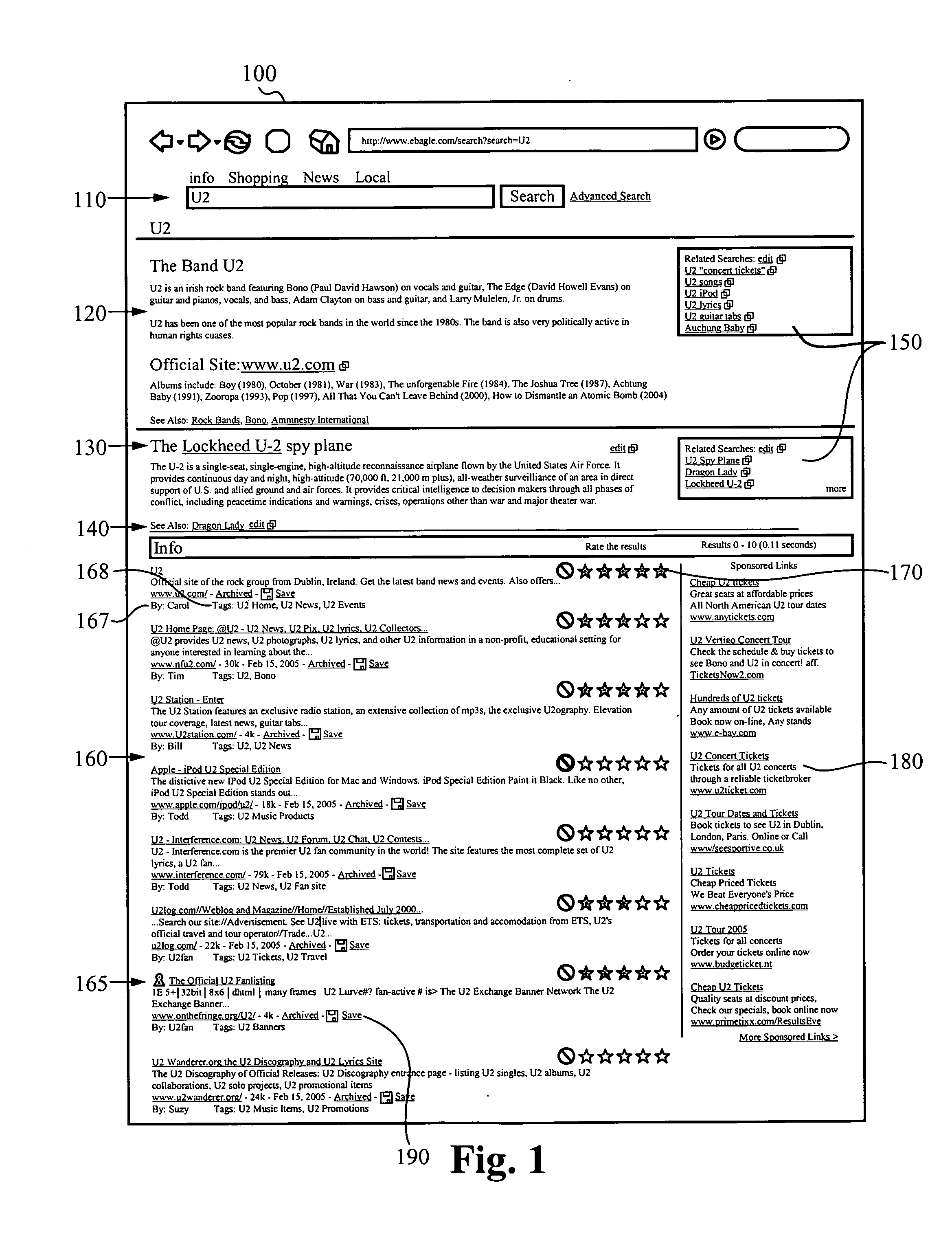Methods of and systems for searching by incorporating user-entered information
a search engine and user-entered technology, applied in the field of search engines, can solve the problems of limited techniques, users are often unsatisfied or frustrated with the results returned by search engines, and no mechanism by which they can share, and achieve the effect of better search results
- Summary
- Abstract
- Description
- Claims
- Application Information
AI Technical Summary
Benefits of technology
Problems solved by technology
Method used
Image
Examples
Embodiment Construction
[0024] Embodiments of the present invention, unlike traditional search engines, make use of supplemental information to provide more relevant information to users searching the Internet, more particularly where this supplemental information is user-entered. For example, in accordance with the present invention, a first user performing a search is able to add user-entered information about performing searches for information regarding a concept referenced by the query. The first user is able to enter (1) a description of a concept related to the query, (2) advice for performing a search relating to that concept, (3) “see also” hyperlinks to query terms associated with related concepts, (4) related or suggested query terms, (5) feedback on the relevance of the results to his search, or (6) any other information. Additionally some or all of this information can be generated by computer algorithms, Web crawlers or other technology. A second user performing a similar or related search is...
PUM
 Login to View More
Login to View More Abstract
Description
Claims
Application Information
 Login to View More
Login to View More - R&D
- Intellectual Property
- Life Sciences
- Materials
- Tech Scout
- Unparalleled Data Quality
- Higher Quality Content
- 60% Fewer Hallucinations
Browse by: Latest US Patents, China's latest patents, Technical Efficacy Thesaurus, Application Domain, Technology Topic, Popular Technical Reports.
© 2025 PatSnap. All rights reserved.Legal|Privacy policy|Modern Slavery Act Transparency Statement|Sitemap|About US| Contact US: help@patsnap.com



